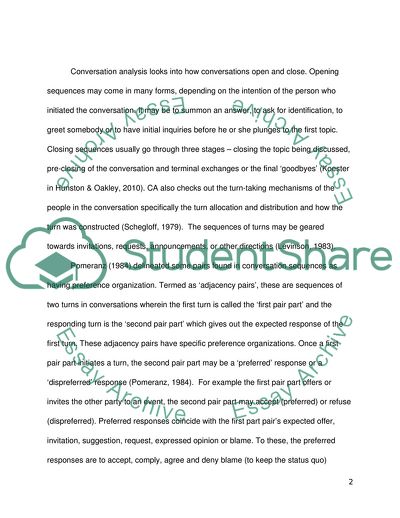Cite this document
(Conversation Analysis of Two Conversation Extracts Report Example | Topics and Well Written Essays - 2750 words, n.d.)
Conversation Analysis of Two Conversation Extracts Report Example | Topics and Well Written Essays - 2750 words. https://studentshare.org/humanitarian/1819076-conversation-analysis-for-2-conversations-analysis-of-one-chapter-of-business-english-textbook
Conversation Analysis of Two Conversation Extracts Report Example | Topics and Well Written Essays - 2750 words. https://studentshare.org/humanitarian/1819076-conversation-analysis-for-2-conversations-analysis-of-one-chapter-of-business-english-textbook
(Conversation Analysis of Two Conversation Extracts Report Example | Topics and Well Written Essays - 2750 Words)
Conversation Analysis of Two Conversation Extracts Report Example | Topics and Well Written Essays - 2750 Words. https://studentshare.org/humanitarian/1819076-conversation-analysis-for-2-conversations-analysis-of-one-chapter-of-business-english-textbook.
Conversation Analysis of Two Conversation Extracts Report Example | Topics and Well Written Essays - 2750 Words. https://studentshare.org/humanitarian/1819076-conversation-analysis-for-2-conversations-analysis-of-one-chapter-of-business-english-textbook.
“Conversation Analysis of Two Conversation Extracts Report Example | Topics and Well Written Essays - 2750 Words”. https://studentshare.org/humanitarian/1819076-conversation-analysis-for-2-conversations-analysis-of-one-chapter-of-business-english-textbook.


